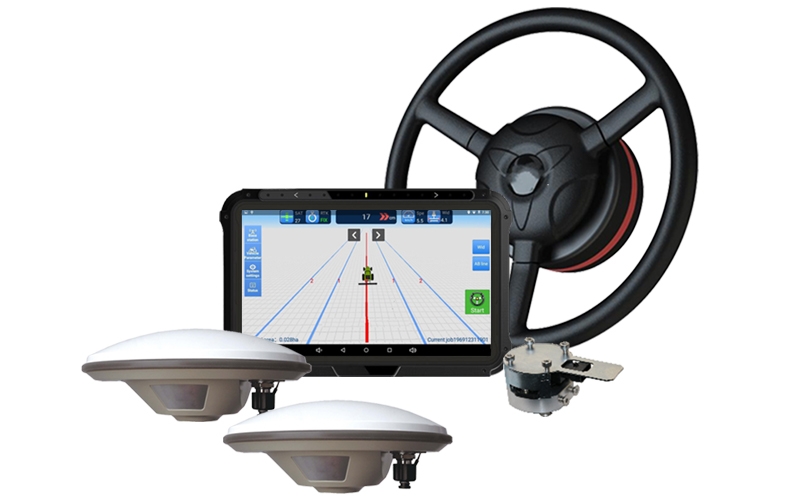What is autopilot system?
The autopilot system is a flight control system that is used to control the flight of an aircraft without the intervention of the pilot. The system is usually operated by a computer programmed to follow a specific flight path. Early autopilots were developed primarily for use in aircraft, but autopilot systems are also used in drones, spacecraft, and missiles. In other words, an autopilot is a mechanical, electrical, or hydraulic system used to guide a vehicle without assistance from a human being.
Now as you know “What is autopilot system?” Let's move towards its benefits and working.
How Do Autopilot Systems Work?
Autopilot systems are designed to make flying an aircraft as easy and stress-free as possible. They are a godsend for pilots and have revolutionized air travel. These systems use a variety of sensors to automatically keep the vehicle in its lane and at a safe distance from other vehicles.
Aircraft autopilot systems keep the plane in a steady flight path, making small adjustments to maintain that path. The autopilot can be engaged or disengaged at the push of a button, and most systems will automatically disengage if the plane experiences unusual turbulence or if the pilot takes over manual control of the aircraft.
Importance of autopilot system
Autopilot systems are important for some reasons. Early autopilot systems were important for two reasons: they allowed for hands-free flying and they helped to prevent pilot error. Early autopilot systems were not as reliable as today's systems, but they were still valuable tools for pilots. Today, autopilot systems are even more important, as they can help to prevent accidents and save lives. Pilots have been using autopilot systems since the early days of aviation. They can help reduce pilot workload, provide stability in bad weather, and even help prevent accidents.
Autopilot systems make flying an airplane much easier and less fatiguing for the pilot, and they are becoming increasingly affordable for general aviation airplanes. In this part of the blog, we'll discuss the benefits of autopilot systems and why every pilot should consider using one.
Why Should Every Pilot Use an Autopilot System?
Autopilot systems are devices that can make flying much easier and safer. Here are reasons why every pilot should use an autopilot system.
1. Autopilot systems can help reduce pilot workload.
2. Autopilot systems can help improve flight safety.
3. They can help you maintain control of your aircraft, even in the most challenging situations.
The Benefits and Risks of Autopilot Systems
Autopilot systems are becoming increasingly commonplace in aircraft. These systems can provide significant benefits in terms of safety and efficiency, but they also come with risks that must be managed. It is important to understand both the benefits and the risks of these systems before deciding to use them.
- Benefits of Autopilot Systems
The following are the benefits of the autopilot system:
- They can help you save time
If you are looking for ways to save time, an autopilot system may be the answer for you. By having an autopilot system in place, you can have your business run on autopilot, freeing up your time to focus on other things. An autopilot system can save you a lot of time and hassle in your business. This system is especially useful for long flights or when you are flying in unfamiliar territory. An autopilot system can be a real lifesaver for busy pilots.
- They can help you stay on course
If you're like most people, you probably have a lot on your plate. Between work, family, and other obligations, it can be tough to find time to relax. That's where the Autopilot system comes in. The autopilot system is an essential piece of equipment for any vessel. It keeps the vessel on course, even in bad weather or when the captain is not at the helm. However, it is important to remember that autopilot is not infallible. If something goes wrong with the system, it is important to have a backup plan in place.
- They can help you conserve fuel
With the increasing cost of fuel, it is more important than ever to find ways to conserve fuel. One way to do this is to use an autopilot system. Your autopilot system can help you conserve fuel by automatically maintaining a constant speed and altitude. This can help you save money on fuel costs, and it can also help reduce your environmental impact. After all, fuel is one of the most significant operating costs for an aircraft.
- Risk of Autopilot Systems
The autopilot system is an important safety feature in modern aircraft. However, there is a potential risk associated with its use. If the system fails, the plane may crash. Therefore, pilots need to be aware of the potential risks associated with the use of the autopilot system. This risk is related to the reliance of the system on computer-generated information, which may not be accurate. Additionally, the system may not be able to react appropriately to unexpected situations. It is important to remember that autopilot is designed to assist the pilot, not replace them.
SMAJAYU JY302 Autopilot system
The SMAJAYU JY302 autopilot system is an electronic stability control system for aircraft. It is designed to maintain the aircraft in level flight and to prevent it from entering into a stall or spinning. The system is made up of a base station and a vehicle control component. The vehicle control system consists of a control tablet integrated with a high-precision GNSS board, a steering wheel motor with an integrated controller, and an angle sensor.

In nutshell, the SMAJAYU JY302 is the best autopilot system on the market. It is reliable, easy to use, and provides great features and benefits. This system is perfect for those who want to maintain complete control over their aircraft, as well as those who want to reduce their workload while flying.


